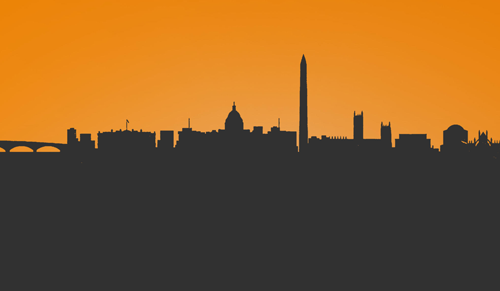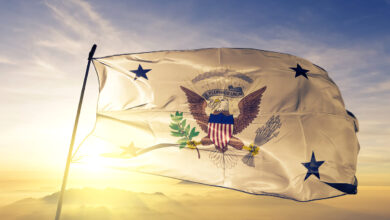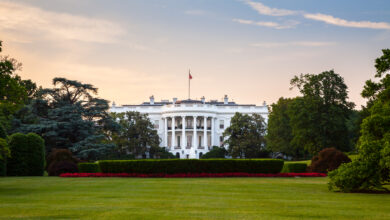
The Quick Take
A quick look at the headlines this week 👀🏃🏻♀️
- G20: The leaders of the world’s strongest economies meet today and tomorrow in Osaka, Japan. High on the agenda: trade.
- Trump & Xi: One of the most anticipated meetings at the G20 is between Trump and China’s Xi JinPing. Yeah, they’ll talk about those nasty tariffs.
- Iran sanctions: On Monday, the Trump administration imposed new sanctions on Iran. They’re not likely to make much of a difference, since they’re targeted at Iranian officials and preventing them from using international banks, which they probably don’t. Womp, womp.
- Iran nuclear weapons: Don’t be surprised when Tehran announces that its uranium stockpiles have exceeded the limit set by the 2015 nuclear deal. Iranian leaders had said it would continue to enrich uranium. 👀
- Istanbul elections: It was a thumping. In Turkey’s largest city and financial center (NOT THE CAPITAL!), Ekrem İmamoğlu won the mayoral re-run, as he did on March 31 — by an even larger margin (800,000 votes). Turkey’s election commission, under pressure from Turkish president, Recep Tayyip Erdoğan, canceled the March 31 results, betting that the ruling party candidate would win in a re-run. Wrong. #Sad.
- The Kushner Peace Plan: The US, led by White House advisor, Jared Kushner, hosted a conference in Bahrain this past week. The goal: drum up investments for Palestine – $50 billion. I guess they forgot that it was the same White House that cut off much needed aid to the Palestinians, soon after taking office. No surprise the Palestinian Authority stayed away, as did most Palestinian business people. Israeli prime minister, Benjamin Netanyahu, stayed away, too.
- $4.5 billion for the border: It’s been another hard week on the US-Mexico border. The bodies of Oscar Alberto Martínez and his daughter washed up in the Rio Grande. There were reports about horrid conditions in the migrant shelter in Texas, which forced John Sanders, the acting Customs and Border Protection commissioner, to quit. The House Democratic leadership pushed through a $4.5 billion emergency aid package this week to help improve conditions.
G20!
All eyes are on Osaka, Japan today and tomorrow. That’s where the G20, the group of the world’s strongest economies, meets. It all started in 1999, following the Asian economic crises in 1997, in which many Asian currencies collapsed — amid fears that it would spread. Put forward by then US Treasury Secretary Larry Summers and then Canadian finance minister Paul Martin, the idea behind the G20 was to bring finance and economics ministers together to avert such crises and work to tackle global economic challenges. Fast forward to 2008 and the global financial crisis. An emergency session with world leaders was put together. That marked the first G20 “summit” of world leaders. More than a decade later, the summit has become a regular event, though its remit has expanded. The G20 not only looks at global economic challenges, but also touches on global issues such as climate change, sustainability, migration, education, terrorism, gender inequality, and the digital space.
Japan has set three key issues to headline the G20 summit: the digital economy, climate change, and trade. Yeah, with growing protectionism from all corners of the globe, particularly from the US and China, the two largest economies, trade will be under the spotlight. Trump and China’s leader, Xi Jinping, plan to meet in Osaka. Last time Trump and Xi met, in Buenos Aires, for another G20 event, they agreed to negotiate on their respective trade issues. Those negotiations didn’t work out so well. Can they come to some sort of agreement? We’ll see.
G20:
- Alina Alimova and Nicholas Goggin have a useful guide to understanding the G20. (Atlantic Council)
- Mieko Nakabayashi and James Carter outline three steps to a winning G20 for Trump and Japan’s Abe. (The Hill)
- What Trump can’t get wrong when he goes to Osaka. Samatha Vinograd discusses. (CNN)
- How can we make sense of the Osaka agenda? Wrenn Yennie Lindgren helps us out. (The Diplomat)
- The US-China rivalry was a topic of concern at the 18th Shangri-La Dialogue, especially for officials from Southeast Asia. Bonnie Glaser argues that the choice for Southeast Asia is not between US and China, but rather between a future of shared rules and norms and a future in which might makes right. (CSIS)
- What do the recent meetings between Xi Jinping and Kim Jong Un mean for China-North Korea relations – and US interests in the region? Jung Pak explores. (Brookings)
- Danielle Kost on why the US-China tariff standoff hurts American companies more. (Harvard Business Review)
- Trump sanctions Iran’s supreme leader — but to what end? And with what impact? Robin Wright explores. (New Yorker)
- Susan Rice analyzes how the Trump administration can move toward de-escalation with Iran. (NYT)
- Amy M. Jaffe looks at the risk of miscalculation in the Gulf. (CFR)
- Why did Trump decide against airstrikes on Iran? Susan Hannah Allen and Carla Martinez Machain consider the possible reasons. (Monkey Cage)
- As US sanctions hit Iran, residents complain of medicine shortages, reports Somayeh Malekian. (ABC News)
- Should US-Iran tensions impact oil supplies, the countries most affected by the turmoil are those in Asia: China, India, Japan, and South Korea, who secure up to half of their crude oil from the Middle East. Vandana Hari explains. (Nikkei Review)
- Trump’s Middle East peace plan is in the works. What does the region think? Zaha Hassan, Sarah Yerkes, Yasmine Farouk, Michele Dunne, Marwan Muasher, Intissar Fakir, Federiga Bindi, and Jake Walles offer a quick take. (Carnegie Endowment for International Peace)
- Why whatever the Bahrain workshop proposes is doomed to fail, by Yara Hawari. (Al Jazeera)
- The EU shouldn’t support a Trump administration plan that dangles economic carrots to Palestinians while entrenching the Israeli occupation, argue Muriel Asseburg and Hugh Lovatt. (Foreign Policy)
On the border
As mentioned above, there were a number of news items from the US-Mexico border this week. The top headline was the death of Oscar Alberto Martínez and his daughter. One of the issues that arose: a photo of them floating in the Rio Grande.
- How much power can one image actually have? Nicole Smith Dahmen and Paul Slovic reflect. (The Conversation)
- The tragic photo of dead migrants is proof our system is broken, says FPI Fellow Alice Driver. (CNN)
- Andrea Pitzer on America’s new concentration camp system. (NYRB)
To read the entire edition of FP Interrupted, click here. To subscribe to FP Interrupted, click here.




